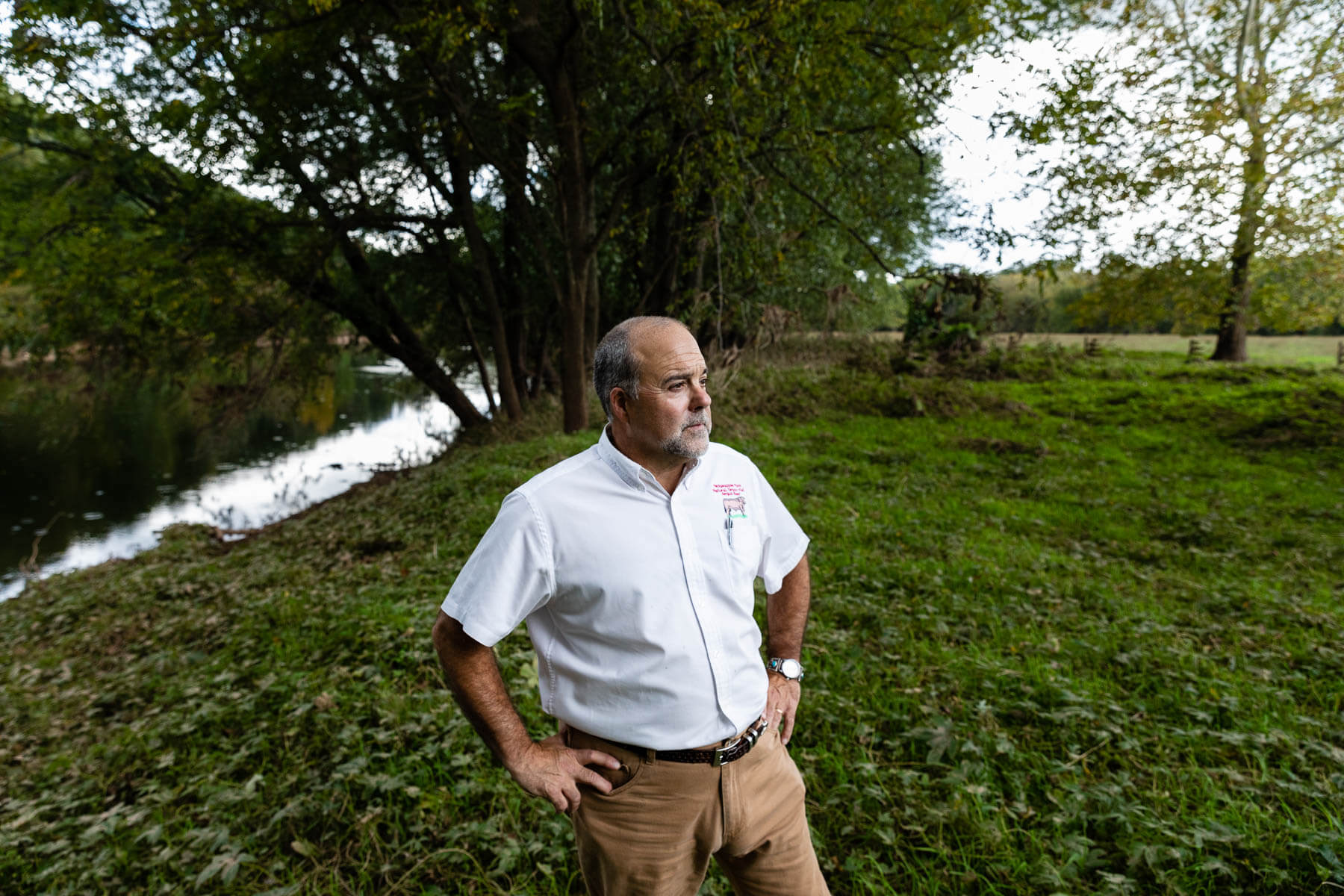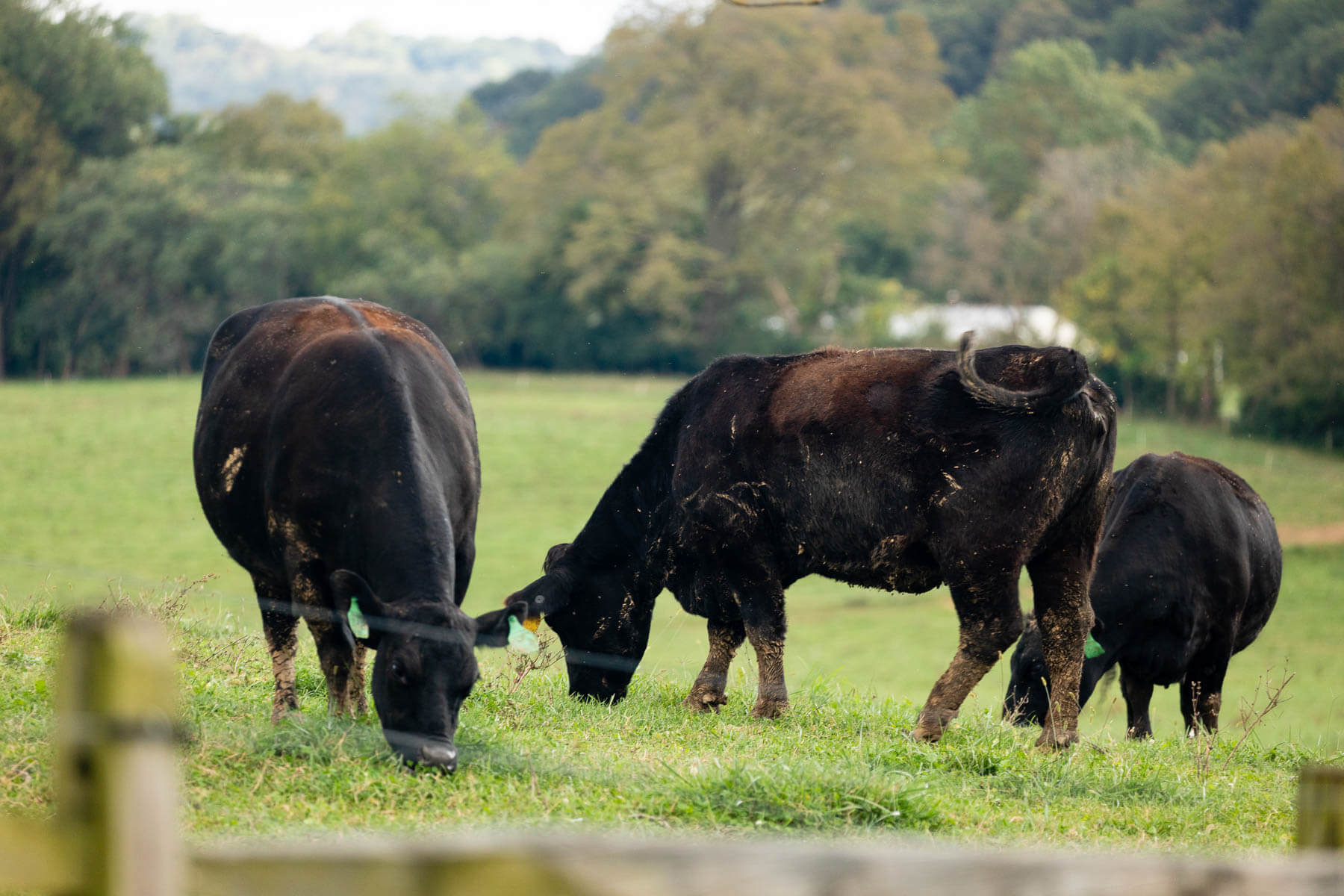A not so impossible sustainable beef operation demonstrates success

To the untrained eye, Hedgeapple Farm in Frederick, Maryland, looks like your run of the mill cattle operation. Calves stand on a hill by the road, attached to their mother’s hip. Herds graze in the pasture or take shade under an open-air facility, dining on hay. In the background, the impressively-wide Monocacy River can be seen through the thinning trees.
It might not look like it, but this pastoral scene is actually an intricate agricultural model that has both environmental and financial benefits. Known in some circles as regenerative agriculture, the system uses farming to improve—not worsen—the health of the soil and surrounding environment.
“We’ve been doing regenerative grazing for 20 years, before it was cool,” said Dr. Scott Barao, executive director of the Jorgensen Family Foundation, the nonprofit that owns the farm.
Unlike at your typical cattle farm, where cows eat grain in an enclosed space, the 200+ cattle at Hedgeapple constantly graze through 300-acres of sectioned off grass and hay pasture. A sophisticated pasture management system gives the vegetation enough time to grow back and helps spread manure across the farm. Both the manure and the plants themselves enrich the soil, which nearly eliminates the need for commercial fertilizer. The healthy, diverse vegetation also acts as cover crops that soak up nutrients before they enter the river.
“It’s a beautiful system,” said Dr. Barao, an award-winning farmer with a doctorate in beef cattle nutrition and management.

Hedgeapple Farm was the first farm in Frederick to be named a Certified Agricultural Conservation Steward. They share a mile-long border with the Monocacy River, the largest tributary of the Potomac River, which drains into the Chesapeake Bay. But Hedgeapple was formed not only to steward its land, but to prove that you can have a beef operation that’s both sustainable and profitable.
Though the farm is owned by the Jorgensen Family Foundation, Hedgeapple is funded only by the retail sale of its beef. To prove that this is truly a sustainable business model, Dr. Barao and the Jorgensen Family have designed a farm that can be replicated by others.
“We farm just like every other farmer,” said Dr. Barao, who works only alongside Farm Manager Jay Fulmer. “This is not a university research facility where we’re getting millions of state dollars pumped in here. This [farm] has to survive on its own.”
One way the farm makes up for the extra expenses spent on regenerative practices is by selling a higher quality product. Locals will buy the grass-fed, organic beef for its nutritional value, as well as for the farm’s positive impact on the land. Dr. Barao experimented with selling wholesale to restaurants and grocery stores, but found that with a premium product, he can make more profit by selling straight to consumers.
Hedgeapple Farm also benefits from the genetics of their cattle. For over twenty years they’ve worked on breeding cattle that can thrive in a grazing environment, as opposed to a feedlot. The cows are slightly smaller than average but fit into the system; they don’t require additional feed or need to be shown how to graze. Dr. Barao sells bulls from the herd to other farmers, turning more profit from the cattle.
“We have a package here that demonstrates environmental sustainability and economic sustainability,” said Dr. Barao.

Throughout the years, other farmers have visited Hedgeapple to see the model in action and implement some of the practices.
Frederick County farmer Garvin Tankersley III got his start by purchasing a bull from Hedgepple. He now has over 60 cows that graze pasture, and a steady buyer for his grass-fed, organic beef. According to Tankersley, regenerative grazing has in many ways been less expensive than the alternative.
“Less labor feeding them, less purchased feed,” explained Tankersley.
Dr. Barao knows that people can’t turn their farm into a grazing operation as elaborate as Hedgeapple’s overnight. Between the management of the grazing system, the pasture biology and health, the breeding of the cattle and the environmental practices, it can seem like a daunting pursuit.
On top of that, farmers have to deal with challenges outside their control. In September, Hurricane Ida caused the Monocacy River to flood 100 acres of Hedgeapple Farm, damaging pasture and fences.
“A lot of farmers look at this system and think that this is a really hard thing to do because there are so many components,” said Dr. Barao. “But if you work at it slowly and simultaneously you can achieve success.”

Comments
There are no comments.
Thank you!
Your comment has been received. Before it can be published, the comment will be reviewed by our team to ensure it adheres with our rules of engagement.
Back to recent stories